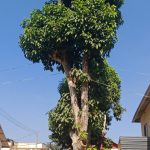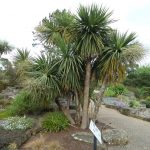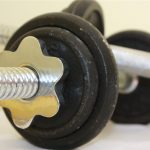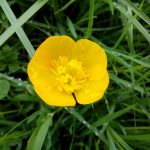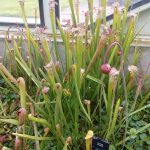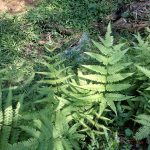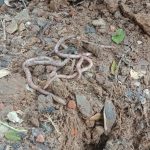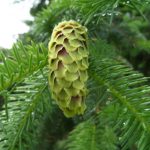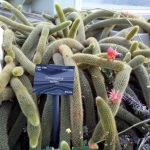TECHNIQUES OF STUDYING FOSSILS
Study of Fossils is a unique activity as fossils are composed of mineral matter and processing of this material is a challenge. Several techniques are available to study fossil plants and to understand the internal and external features. Some of these are:
- Ground thin sections
- This technique is very suitable for the study of petrifactions which consist of mineralized rock material.
- The fossil material might be embedded deep inside the excavated rock.
- The rock is broken up to expose the fossil and after cutting to a convenient size the surface is smoothed out using an abrasive like Carborundum #300 .
- The slice is mounted on to a glass slide using a special resin
- This smoothed surface is sliced very close to the surface to obtain a thin slice which is further smoothed by using carborundum#100
- This thin section is transparent and mounted under a coverslip using a mounting resin like Canada Balsam
- This slide can now be viewed under a microscope
Disadvantage: Lot of sample might get wasted
Advantage : can be used generally for any type of petrified material
- Film or Peel technique
This technique can be used for petrifactions that are perfectly preserved. The procedure for slide preparation involves the following steps:
- The specimen is g round and smoothened using carborundum
- The smoothened surface is etched to expose the material structure using Hydroflouric acid (HF) and Hydrochloric acid (HCl)
- The etched surface is washed in running water to remove the acid
- The exposed surface with details is then air dried and covered with a thin film of nitrocellulose
- This is allowed to dry well for about 6 hours
- The film is then peeled off carefully and mounted on a slide in Canada Balsam
- The peel is then sealed with a cover glass to make a permanent slide
- This slide can then be viewed under a dissection microscope
Advantages :
- Less expensive
- Easy and quick process
- Peels are thinner, translucent and more durable
- Internal structure can be observed
- Transfer Technique
This technique is very appropriate for studying compression type of fossils. The method of preparation is quite simple involving the following steps:
- The surface of the rock containing the specimen is first cleaned
- Then coated with two coats of peel solution like nitrocellulose
- The film is allowed to dry
- Then the rock matrix is removed by cutting
- The specimen is now immersed in 25% Hydroflouric acid to remove the adhering rock material
- Then the specimen is washed, and dehydrated
- The dehydrated specimen is now mounted onto a slide using and resin and sealed permanently
Advantage: This method helps in observing surface features like venation patterns, pollen wall ornamentation and cuticular structures
- Microtomy
This method is used to study materials that can be sectioned using a microtome
It involves the following steps:
- The material is first softened with Hydroflouric acid and then Potassium chlorate (KClO3) is used for further softening
- The softened material is treated with 1: 1 solution of phenol and 95% alcohol for dehydration
- Then it is embedded in paraffin or celloidin for support
- The embedded material is sectioned using a microtome which is set at a higher thickness range above 100 microns
- The sections are processed to remove the embedded material and then mounted onto a glass slide to make a permanent preparation
Advantages :
- Very suitable for fossil woods that have a well preserved cell wall structure
- Helps to observe the internal features of the preserved material
- X-Ray Radiography
Sometimes certain fossils may be susceptible to damage on treatment with acids, or while peeling or during sectioning on a microtome.
In such a scenario, X-ray radiography is used to study these fossils in the following steps:
- The fossil specimens are photographed using X-rays
- X-ray diffraction technique is used to visualize the fossil features
- This is done by checking differences in density and the shadows produced.
Advantage:
This technique is particularly useful to study coal balls that contain calcified seeds
- Maceration Technique
The method involves the teasing out and separation of minute particles that may be lost in other treatments.
The procedure of maceration is done in the following steps
- Softening of the material is initially done using hot dilute nitric acid
- This is followed by treatment with Potassium chlorate
- Finally dilute sodium hydroxide is added to completely break down the matrix in between the fossilized parts
- The resulting plant fragments are thoroughly washed to remove any residual matrix
- Then mounted on a glass and permanently sealed with resin and observed
Advantage:
Whole parts such as fossil pollen and spores can be studied
- Excavation technique
This method is used to analyse minute plant parts such as microphylls and sporangiophores that may be petrified and embedded in rock which may have to be dug out very delicately.
This method can be carried out in the following manner:
The rock containing the specimen has to be randonmly broken to expose the embedded specimen
The specimen then can be removed by using a small chisel and hammer or alternativel a micro vibratory machine can be used to dig out the specimen
Advantage : Whole specimens can be got and reconstruction becomes easy
Disadvantage : Tedious and slow process requiring a lot of precision
SIGNIFICANCE OF STUDY OF FOSSILS
A clear understanding of fossil forms is required to study evolution of plants and animals on earth
Fossil study is also linked to development of the human race
It also helps understand the reserves of fossil fuels and development of alternate sources of energy.
This study may pave the way to revisit the ancient history of earth to solve certain modern issues such as species extinction and climate change


